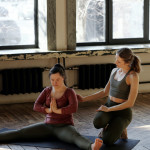The Risks of Too Much Yoga
Injury concerns
Some yoga poses can cause serious injuries to your joints and ligaments. Many of these injuries can be avoided by switching poses, doing fewer repetitions, or using proper form in each pose you do.
You want to make sure you start slow, with easier poses as you advance. Also, always listen to your body and stop if you feel any pain. Over time, as you progress in your yoga practice and get more flexible, you may be able to do more advanced poses. But don't push yourself too hard or you could wind up injured.
Muscle pain and stiffness
Too much yoga can also lead to muscle pain and stiffness. This is especially true if you're not used to doing yoga, or if you do too many advanced poses when you're first starting out. It's important to build up strength and flexibility over time so that your muscles can handle it as well.
Aches in the joints of wrists, elbows, and knees are common in people with these kinds of problems. These aches typically go away after a day or two of rest.
Poor breathing habits
When you do too much yoga, you can also develop poor breathing habits. This is because many of the poses require deep breaths, which can be difficult to do if you're not used to it. Over time, these bad breathing habits can lead to respiratory problems.
Nausea and dizziness
This happens when you overdo hot yoga, or when you do too many poses in a row. It's important to take a break between each pose and drink plenty of water. If you're feeling lightheaded or nauseous, stop what you're doing and take some deep breaths until the feeling goes away.
How to Avoid Risks of Too Much Yoga
The best way to avoid the risks that come with too much yoga is by taking it slow and listening to your body. Make sure you start out slowly, doing some easy poses before moving on to more difficult ones.
Don't push yourself past what's comfortable for you personally. Also, be sure to drink plenty of water before, during, and after your yoga practice. This will help keep you hydrated and avoid any dizziness or nausea.
If you're feeling pain in a particular area, stop doing the pose and take a break. You may also want to ice the area if it's swollen or inflamed. And finally, remember to breathe. Deep breathing is key in yoga, so make sure you're taking full breaths in and out.
Conclusion
While Yoga can be a great way to stay healthy, overdoing it can lead to some serious risks. It's important to take it slow, build up strength and flexibility over time, and listen to your body.












